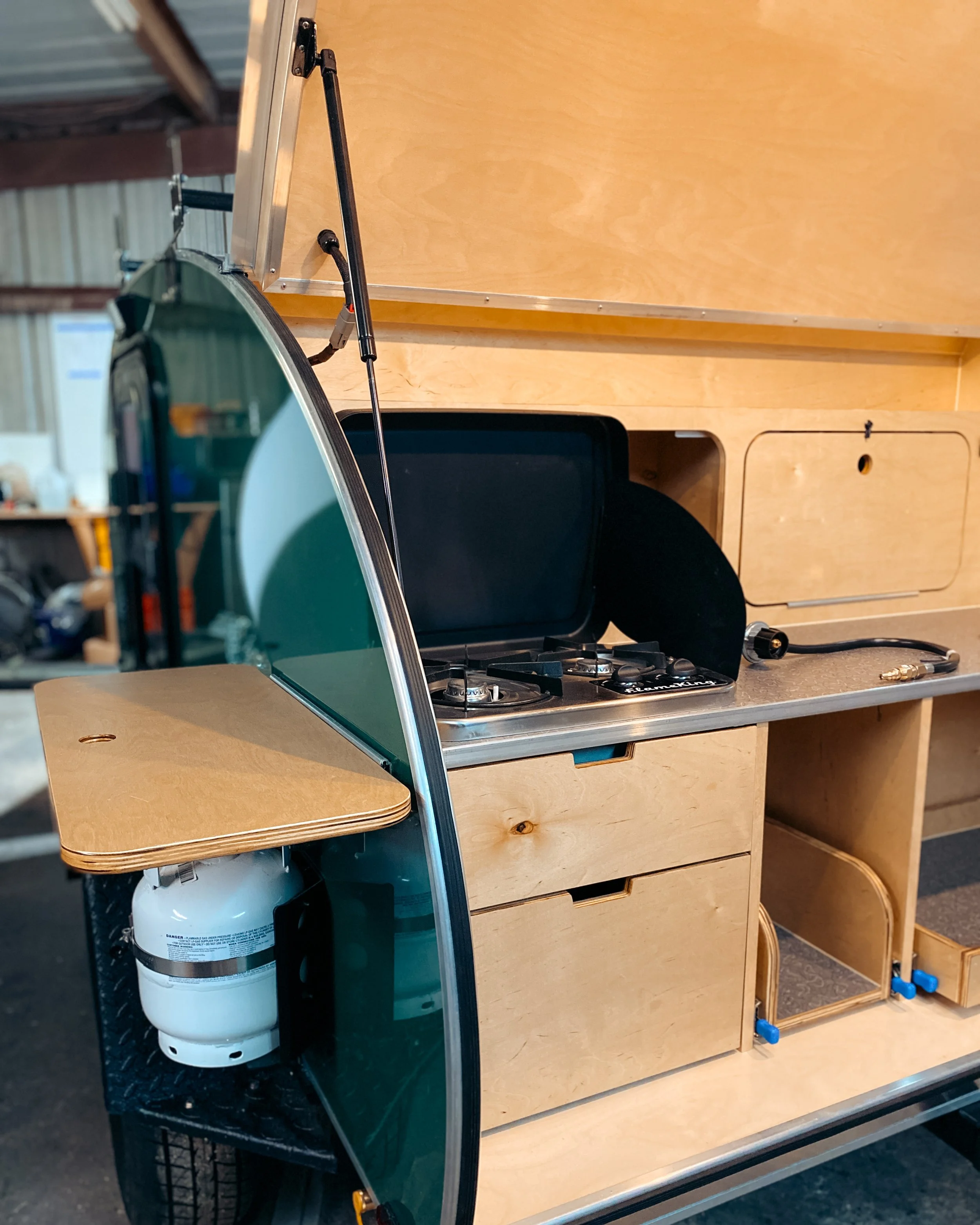After Building 50 Campers, here are 5 Things We’ll Never Do
We’ve built over 50 campers at this point—and while we’ve refined our process, we’ve also made plenty of mistakes in our first build.
If you’re building a DIY camper, here are 5 things we’ll never do —so you don’t have to learn the hard way.
1. Build with OSB
OSB (oriented strand board) might seem like a budget-friendly option at first, but it’s heavy, prone to swelling, and not built for outdoor conditions.
We only use marine-grade plywood, and swear by Baltic birch. It’s lightweight, strong, and finishes beautifully. If you build with pre-finished you’ll also save DAYS of sealing your wood! Your camper deserves better than OSB.
2. Forget the Ventilation
Nothing kills a good night of camping faster than waking up in a damp, stuffy space. Ventilation isn’t just about comfort—it’s your first line of defense against condensation, mildew, and long-term damage.
We install a 10-speed MaxxFan in every build. It’s quiet, moves air in both directions, and works like a charm. Don't skip this step—it matters more than you think.
3. Start Without a Plan
“Winging it” sounds romantic—until you’re deep in the build, surrounded by mismatched parts, and realizing your measurements are off by 5/8 of an inch.
Having a solid plan before you build saves time, money, and a whole lot of second-guessing. That’s exactly why we created our DIY camper plans: to give other builders the roadmap we wish we had during our first few builds.
4. Cheap Out on Hardware
If there’s one category where “you get what you pay for” is painfully true, it’s hardware. Hinges, drawer slides, latches, locks—go cheap and you’ll likely end up replacing them after just a few trips.
We’ve learned to invest in high-quality, durable hardware from the start. It makes your camper more reliable, user-friendly, and travel-ready for the long haul. Steal our parts and materials list.
5. Install a Sink or Stove
This one might be controversial, but hear us out. Built-in sinks and stoves seem convenient, but they take up precious countertop space, reduce storage, and complicate the layout. They also make the galley harder to clean and maintain—not to mention more expensive to install.
Instead, we use a two-burner camp stove (so we can cook on either a side table or inside the galley) and a collapsible sink for dishwashing. Portable setups are flexible, simple, and make way better use of your space.
Want to Build Smarter? We’ve Got You.
If you’re gearing up for your own DIY build, we’ve put together a free cost breakdown spreadsheet that includes every part and material we use—organized, linked, and ready to go. It’ll save you hours of research and help you plan smarter from day one.






